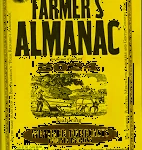Who Will Taste This Almanac Tidbit?

“Have you ever wondered what “sugar plums” were? Like every child used to hearing about sugar plums in “The Night Before Christmas” poem, the author of Harris’ Farmer’s Almanac thought sugar plums were fruit. He was wrong, he later learned. In England in the 1600s, sugar plums were confit candies with a core of nuts or dried fruit encased in layers of crystallized sugar. To make the comfit, a seed or nut would be placed in the center of a pan, with sugar is layered around it. Depending on the size of the candies, a batch could take up to a week to complete. Subsequently, sugar plums were a cherished luxury back in the 18th and 19th centuries, Readelysian.com explains…
I find seemingly inconsequential tidbits of information like this highly useful when it comes to content marketing. Tidbits, I explain to clients and to writers, can be used to describe your unusual way of doing business, or to explain why one of the services you provide is particularly effective in solving a problem. The time and care that went into producing the sugar plums can be compared to the complex processes that go into producing your own products. The image of a “solid core” can be used as a metaphor for solid business practices and ethical standards upheld in your own company.
Content writers need never run out of ideas if they keep a file of interesting tidbits of general information on hand, and including interesting tidbits of information in corporate marketing blogs can help::
- educate blog readers
- debunk myths
- showcase the business owners’ expertise
- demonstrate business owners’ perspective
There’s another purpose tidbits can serve – softening. One of my favorite business books is Geoffrey James’ Business Without the Bullsh*t . The author showcases a point I often stress in corporate blogging training sessions – whether you’re blogging for a business, for a professional practice, or for a nonprofit organization, you’ve need to express an opinion, a slant, on the information you’re serving up for readers. Well, including interesting tidbits softens the effect of the strong opinions the business owner or practitioner might express in the content of the post, while at the same time helping to explain the reasoning behind those opinions.
Readers will savor those “sugar plum” tidbits in your content..






Follow us online!